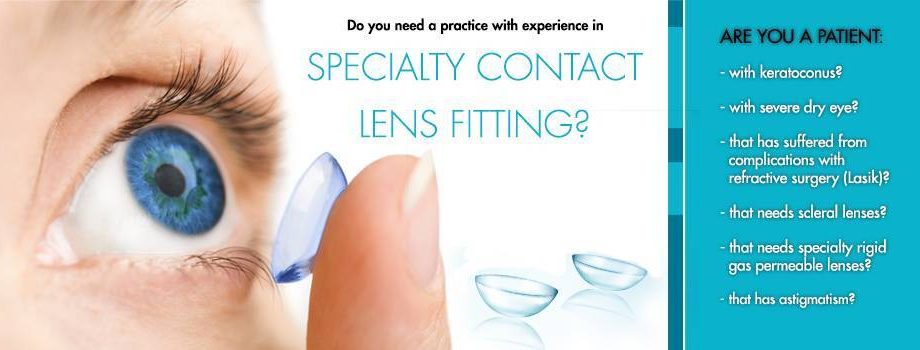Contents
With the development of keratoconus in the initial stage, it is possible to correct vision problems with ordinary contact lenses. But at a later date, the selection of specific, keratoconus lenses is necessary.
Keratoconus occurs as a result of a dystrophic process in the cornea, which leads to its thinning, the formation of a cone-shaped protrusion. Although the pathology itself has been described for a long time, the exact cause of its development has not been established to date, and after the diagnosis is made, it is difficult to determine what the course will be.
Manifestations occur at a young age, usually at 15-25 years, development is possible both rapid and slow, sometimes the disease disappears spontaneously, but in some cases progression occurs with deformation of the cornea.
Among the key complaints, there may be double vision, signs of myopia, which becomes the reason for the selection of glasses or lenses, but they help for a short time and reveal the true cause of the pathology in the topography of the cornea.
Basically, with keratoconus, myopia or astigmatism occurs, which is associated with a change in the curvature of the cornea, but standard lenses or glasses become “small” in less than a year due to the progression of optical disorders.
Can I wear lenses with keratoconus?
It is important to emphasize that the use of glasses or lenses in the development of keratoconus does not help in the treatment of pathology. Optical products only help to compensate for existing visual defects, but the disease itself can continue its progression.
Glasses for the correction of visual pathologies against the background of keratoconus are rarely used, they cannot completely eliminate aberrations. Contact lenses fit snugly to the surface of the cornea, and therefore help in the elimination of visual disturbances.
Which lenses are best for keratoconus?
Soft standard lenses can only be used in the initial stage of pathology, if the refractive changes are up to 2,5 diopters. Subsequently, clearer vision can be achieved by using a toric design lens. In addition, it is necessary to choose models with silico-hydrogel material, due to their high gas permeability.
In the late stage of the disease, specialized keratoconus lenses are used, they are made only to order according to the individual size of the cornea. They can be either soft or hard or hybrid.
What is the difference between keratoconus lenses and regular lenses?
The selection of lenses for patients with keratoconus should only be handled by an ophthalmologist. They will be made individually, according to the size of the cornea. If these are soft products that are performed individually, they are divided into two groups:
- axisymmetric, having a thickening in the center – these lenses can correct myopia, but are not able to eliminate astigmatism, they are suitable only for keratoconus, in which the cornea is less damaged in the center than in the periphery;
- toric lenses will help with astigmatism, especially with its high degree.
If these are hard lenses, they are also divided by size and divided into two groups:
- with a small diameter (up to 10 mm), corneal – quite often several different pairs of lenses of different designs are made to order, selecting them for maximum wearing comfort.
- with a large size (from 13,5 mm or more), corneoscleral or scleral, gas-permeable products that, when worn, rest on the sclera without touching the area of uXNUMXbuXNUMXbthe keratoconus itself – they are more comfortable, but more difficult to select.
Hybrid products are a combination of the two previous groups. Their central part is made of an oxygen-permeable material, but on the periphery they are soft, made of silicone hydrogel. These lenses are comfortable, well fixed on the cornea, provide high-quality vision correction, but they cannot be used when the cornea is dry.
Reviews of doctors about lenses for keratoconus
“Given the severe astigmatism that accompanies keratoconus, as a rule, contact correction becomes an option for achieving the best visual acuity,” says ophthalmologist Maxim Kolomeytsev. – Timing and frequency of lens replacement can vary greatly depending on the type of lens chosen (soft contact lenses or rigid gas permeable lenses) and the rate of progression of the disease.
Popular questions and answers
We spoke with ophthalmologist Maxim Kolomeytsev about the problem of keratoconus and lens correction in it, clarified some of the nuances of treatment.










